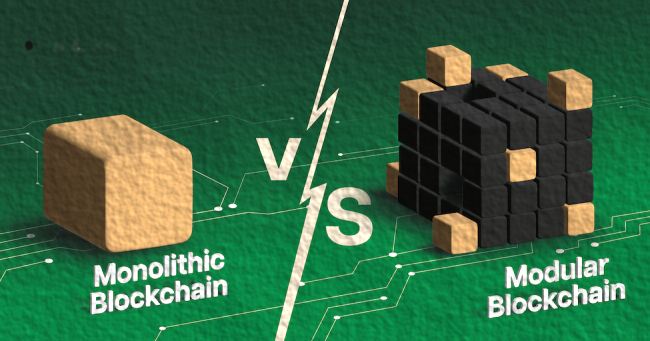
The article is addedd on 2023-04-01 17:49:45 by Miroslav Trifonov
usefulwallets
Blockchain technology has revolutionized the way we think about digital transactions and decentralized networks. However, not all blockchains are created equal. There are two primary types of blockchain architectures: monolithic and modular. In this article, we will explore the differences between monolithic and modular blockchains.
Monolithic Blockchains
A monolithic blockchain is a single, self-contained blockchain network that handles all functions and transactions within a single network. This type of blockchain is often used in public, permissionless blockchains like Bitcoin and Ethereum. Monolithic blockchains are characterized by their high levels of security and immutability, but they can be slow and expensive to use due to their limited scalability.
Modular Blockchains
A modular blockchain, also known as a "modular architecture," is a blockchain that is designed with multiple interconnected modules that can be easily customized and configured to meet specific use cases. This type of blockchain is often used in private, permissioned blockchains for enterprise applications. Modular blockchains offer greater scalability and flexibility compared to monolithic blockchains, allowing users to create custom modules for specific use cases.
Differences between Monolithic and Modular Blockchains
The primary differences between monolithic and modular blockchains can be summarized as follows:
- Architecture: Monolithic blockchains are designed with a single network architecture, while modular blockchains are designed with multiple interconnected modules.
- Customizability: Modular blockchains offer greater customizability and flexibility compared to monolithic blockchains, allowing users to create custom modules for specific use cases.
- Scalability: Monolithic blockchains are often limited in terms of scalability due to their single-network architecture, while modular blockchains are designed for greater scalability and can be easily scaled up or down to meet specific demands.
- Security: Both monolithic and modular blockchains offer high levels of security, but monolithic blockchains are often more secure due to their simpler architecture and larger network size.
Conclusion
While both monolithic and modular blockchains have their own unique strengths and weaknesses, the choice between the two depends on the specific use case and application. Monolithic blockchains are ideal for public, permissionless networks that require high levels of security and immutability, while modular blockchains are better suited for private, permissioned networks that require greater scalability and flexibility. Ultimately, the success of a blockchain project depends on careful consideration of the specific requirements and use cases.







